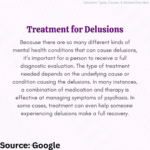One idea or condition that has been presented as an explanation for why hostages can form a psychological link with their captors is called “Stockholm syndrome.” It is thought to be the outcome of an extremely specific combination of conditions, specifically the power disparities seen in relationships that are abusive, kidnapping, and hostage-taking.
In Stockholm syndrome, hostages/captives develop a psychological bond with their captors/enslavers. This mental illness occurs due to rather specific circumstances or situations in which the hostage feels special relationship towards their captors. In addition to the original kidnapper-hostage situation, Trauma bonding now includes other types of trauma in which there’s a bond between the abuser and the person being abused.
Some people believe that emotional relationships between captors and captives are unreasonable given the danger or risk the victims face. However, emotional bonds may develop over intimate times spent together. Because there isn’t a consistent body of academic research, Trauma bonding has never been included in the Diagnostic and Statistical Manual of Mental Disorders (DSM), which is the gold standard for diagnosing psychiatric illnesses and disorders in the United States. The syndrome is uncommon; according to FBI data, 8% of hostage victims exhibit symptoms of Stockholm syndrome.
Symptoms of Stockholm syndrome
- If the hostage develops positive feelings towards their captors, the development of Trauma bonding becomes likely.
- A person suffering from the syndrome may not be willing to cooperate with the police or authorities because of the bond they previously had with their captors/abusers.
- People suffering from the syndrome develop personal feelings such as sympathy and inclination towards their captors.
- The victim of Trauma bonding starts to believe in the humanity of their oppressor/captor. They start to hold the same values as their aggressor, usually due to being manipulated. The victim doesn’t perceive the abuser as a threat/danger, rather they feel obligated to obey them.
- The person feels completely powerless in front of their captors and are willing to follow whatever they ask from them.
- The victim feels affection and attachment with their abuser/oppressor.
- The person completely rationalize the abuse from their opressors.
- They feel as though basic dignity from the abuser as though some source of kindness and sympathy towards them.
- The person may even attempt to help the abuser.
- Trauma bonding may even suffer some syndromes of Post Traumatic Stress Disorder (PTSD).
Causes
- If a person is in an emotionally charged situation, they may develop the Trauma bonding.
- Abusive relationships specifically in women result in the development of this syndrome.
- Childhood trauma including physical and/or emotional abuse.
- Long period isolation from the outside world.
- Living in poor conditions or being deprived of basic human needs and rights.
- Being in the state of pure despair creates false hope towards the perpetrator in the mind of the victim.
- Human trafficking, sex trafficking and prostitution.
- Victims appease their abusers to cope and ensure their safety.
What does Stockholm syndrome do to a person?
Individuals who are going through Stockholm syndrome may begin to feel justified in their victimization and even develop empathy for those who are abusing them. Additionally, individuals could begin to accept and justify mental and physical abuse, thinking that they “deserve” it.
How do you know if you are suffering from Stockholm syndrome?
By reading the given symptoms in the blog, you can tell if you are suffering from Trauma bonding.
Common symptoms are:
Affection for or attachment to the abuser.
Attempting to help the abuser.
Distrust of or anger toward those trying to extract them from the situation.
Rationalizing abuse.
Perceiving basic dignity as kindness.
Feeling powerless.
Can you get Stockholm syndrome in a relationship?
Yes, it is very much possible to develop this syndrome in relationships specifically in abusive ones. Women are more likely to develop the Stockholm syndrome in their relationships.
What is the opposite of Stockholm syndrome?
Lima Condition. The precise opposite of Stockholm syndrome is known as Lima syndrome. In this instance, the people who are taking hostages or victimizing others start to show empathy for their needs and desires. The Japanese embassy hostage situation in Lima, Peru in 1996 is the source of the term.
Is Beauty and the Beast Stockholm syndrome?
It is true that the original Beauty and the Beast experienced Stockholm syndrome. Rather than from a true relationship, she formed affections for the Beast while under stress, alone, and without assistance. However, the characteristics of Stockholm syndrome have almost completely disappeared since the story has been adapted for contemporary audiences.
How is Stockholm syndrome cured?
For Stockholm syndrome, there is currently no known treatment. On the other hand, many PTSD treatments are effective for treating Stockholm syndrome. PTSD treatments typically involve both prescription medication and therapy.
Is Stockholm syndrome Toxic?
When there is a power imbalance in a relationship, like that of a parent and kid or a spiritual leader and follower, Stockholm syndrome is frequently present. Among the symptoms of Stockholm syndrome are: Positive regard for those who abuse others or kidnap them.

